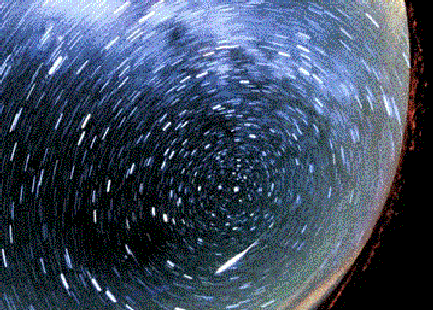
|
Credit & Copyright: V. Winter (ICSTARS)
Explanation:
Tonight you might be able to see Halley's
Comet again - or at least some pieces of it. It is widely thought
that that the meteors from the Orionids meteor shower,
which peaks tonight, are just small pieces of Halley's Comet
falling to Earth. During each pass near the Sun, a comet will
heat up and shed pieces of ice and rock
from its nucleus. This debris
continues to orbit the Sun until
either evaporating or being swept up by some large solar-system
body. A piece of comet debris striking the Moon
creates a small crater, but a piece striking the Earth usually
burns up in the atmosphere causing
a brief, bright
streak.
Every year at this time the Earth crosses an old stream of bits
from Halley's
Comet causing the Orionids display, named from the constellation
(Orion) from which the meteors appear to originate. The
streak below center in the above picture of the northern sky actually
depicts a meteor from
the Perseid
meteor shower,
a usually even more impressive display that peaks every year in
mid-August.
|
January February March April May June July August September October November December |
| ||||||||||||||||||||||||||||||||||||||||||||||||
NASA Web Site Statements, Warnings, and Disclaimers
NASA Official: Jay Norris. Specific rights apply.
A service of: LHEA at NASA / GSFC
& Michigan Tech. U.
Based on Astronomy Picture
Of the Day
